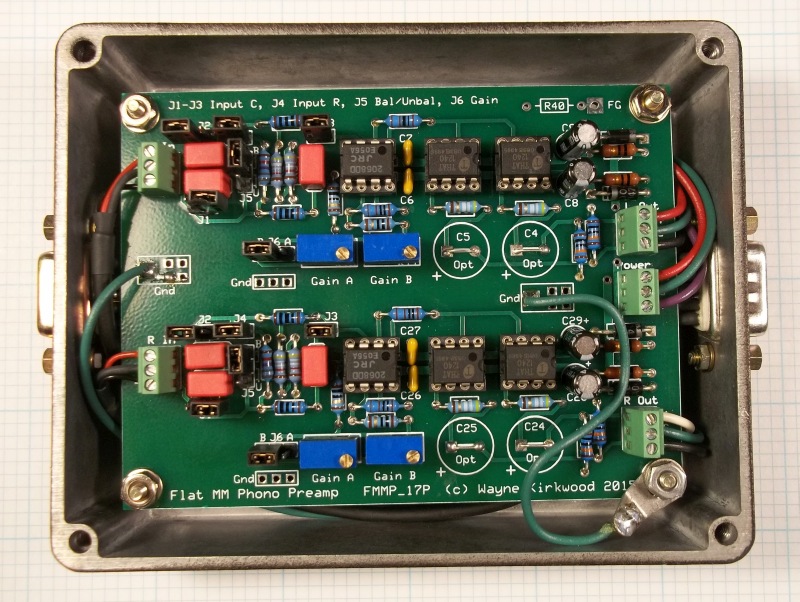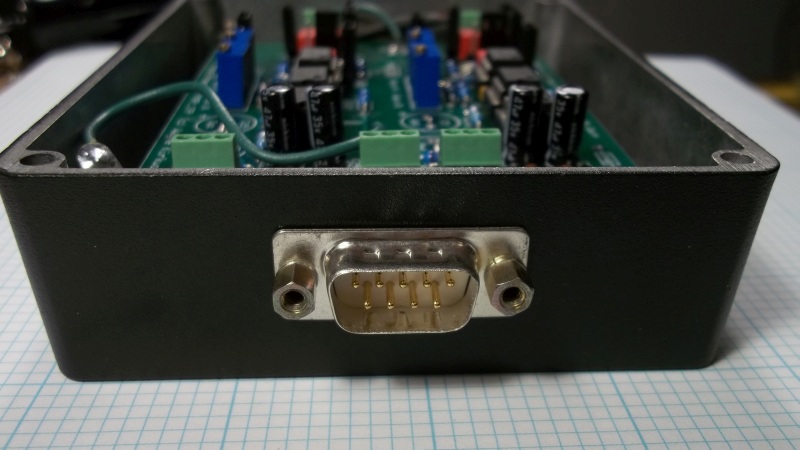Paul suggested using 9 Pin D connectors to minimize panel space and it worked out nicely.
The preamp is designed to be remotely located at the turntable.
The Hammond 1590BB is 4.7" x 3.7" x 1.3" and is easily tucked away behind the turntable.

Balanced Input/Balanced Output Moving Magnet Flat Phono Preamp part of the Phono Transfer System.
The board sits above the D connectors on 5/8" spacers.
The metal case is tied directly to DC ground.
The turntable frame ground has it's own DB-9 pin which also ties to DC ground.
I found that a 100R resistor (R40) from DC ground to the frame works just as well.
The output coupling capacitors will not fit in the box but they really aren't needed.
The typical differential and common mode output offsets are in the millivolt range thanks to the balanced cart connection and common mode rejection stage.

Balanced Input/Balanced Output Moving Magnet Flat Phono Preamp, Balanced Phono Input 9 Pin D Connector
The balanced phono inputs are on a female DB-9 connector.
The back shell is internally shielded with aluminum foil.
It's important the the DB-9 frame is grounded (or AC grounded) because there is about 1.5 pF capacitance from the frame to the pins.
After I took this pick I realized that the color codes for the outputs were reversed.
I always have a hard time remembering the Left is White...
So I reversed them and the inputs.

Balanced Input/Balanced Output Moving Magnet Flat Phono Preamp, Flat Phono Output 9 Pin D Connector
The flat balanced preamp outputs and bipolar DC power input are on a DB-9 male.
The DB-9s are pinned out so that DC will not appear on the cartridge if one were to absently-minded plug the input and output cables together.
At the present time the Flat Preamp is driving the RIAA EQ/Monitor Switcher through 50 feet of cable.
The balanced low-level cartridge cables are less than 3 feet long.
There is a lot of benefit to the balanced input connection and local gain.












